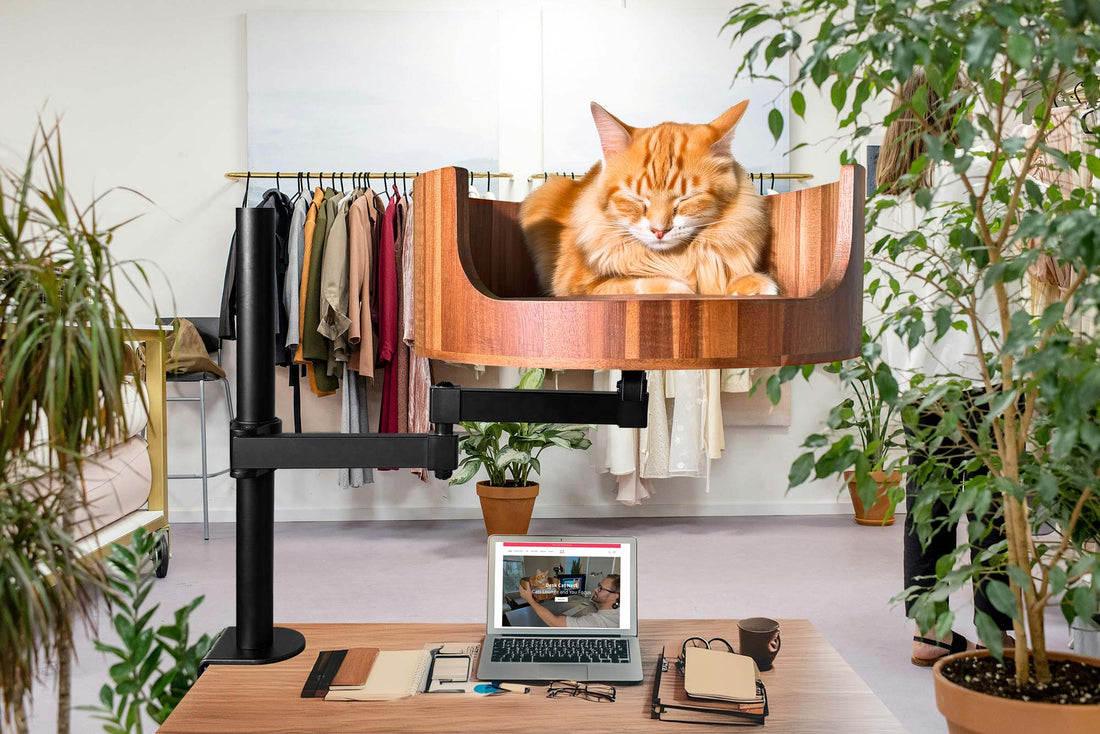
Tail Wagging Meaning Cat: Understanding Feline Behavior
Share
Tail wagging in cats is a behavior that often leaves owners perplexed, as it is more commonly associated with dogs. Understanding what tail wagging means in feline behavior is crucial for recognizing when your cat is happy, agitated, or in distress. By deciphering the meaning behind your cat’s tail movements, you can better meet their needs and strengthen your bond with them. In this article, we will delve into the world of feline communication through tail wagging, exploring the different messages cats convey through this behavior.
Desk Cat Nest, a popular platform for cat owners seeking insights into their pets’ behaviors, has gathered valuable information on tail wagging in cats. From the subtle nuances of a slow, gentle tail flick to the vigorous swishing of an agitated cat, Desk Cat Nest has decoded the meanings behind these movements. With expert input from feline behaviorists and veterinarians, this article will provide you with a comprehensive guide to understanding your cat’s tail language. Whether you have a playful kitten or a senior feline companion, learning to interpret their tail wagging can enhance your relationship and ensure your cat’s well-being.
1. Cats wag their tails to express a range of emotions, not just happiness like dogs.
2. Pay attention to the speed, position, and movement of your cat's tail to understand their feelings.
3. A tail held upright and slightly vibrating indicates excitement or anticipation.
4. Rapid tail swishing can indicate annoyance or aggression, while a slow sweep can express contentment.
5. Understanding your cat's tail language can improve your bond and communication with your feline companion.
Understanding Tail Wagging in Cats
Cats use their tails to communicate various emotions and feelings. While dogs typically wag their tails to show excitement or happiness, cats have a more nuanced way of wagging their tails. A cat's tail can indicate feelings of fear, aggression, playfulness, or curiosity. For example, a quick, flicking tail can signify annoyance or irritation, while a slow, deliberate wag might indicate curiosity or a friendly greeting. It's important to pay attention to the tail movements along with other body language cues to understand what your cat is feeling.
Interpreting Different Tail Positions
In addition to the wagging motion, the position of a cat's tail can also give insight into their mood. A raised tail with a slight curve at the tip often indicates a content and confident cat. Conversely, a low-hanging or tucked tail can suggest fear or submission. A puffed-up tail is a sign of extreme agitation or aggression, while a twitching tail may mean your cat is feeling playful or excited. By observing your cat's tail position along with their overall body language, you can better understand their emotions and respond accordingly.
Responding to Tail Wagging Behavior
When your cat wags their tail, it's important to assess the situation and respond appropriately. If your cat's tail is flicking rapidly or their body language appears tense, it's best to give them space and avoid any potential triggers for aggression. On the other hand, a slow, relaxed wag may indicate that your cat is in a playful or curious mood, in which case you can engage them in interactive play or offer them a new toy to investigate. By understanding the meaning behind your cat's tail wagging behavior, you can strengthen your bond with your feline companion and ensure a harmonious relationship based on mutual understanding.
Desk Cat Nest FAQ
What does it mean when my cat wags its tail?
When a cat wags its tail, it can indicate a variety of emotions such as excitement, agitation, or even aggression. It's important to pay attention to other body language cues to determine the true meaning behind the tail wagging.
Will a Desk Cat Nest help reduce my cat's tail wagging behavior?
A Desk Cat Nest can provide a cozy and stress-free environment for your cat, which may help reduce instances of tail wagging caused by anxiety or discomfort. However, it's important to also address any underlying issues that may be causing the behavior.
How do I introduce my cat to a Desk Cat Nest?
Start by placing the Desk Cat Nest in a quiet and familiar area where your cat feels safe. Sprinkle some catnip or treats inside to encourage exploration. Allow your cat to approach the nest at their own pace and never force them inside.
Can a Desk Cat Nest help with other behavioral issues besides tail wagging?
Yes, a Desk Cat Nest provides a comfortable and secure space for your cat to relax and feel safe, which can ultimately help with various behavioral issues such as excessive meowing, hiding, or aggression. It's important to provide positive reinforcement and patience during the adjustment period.
In conclusion, the Desk Cat Bed is a valuable choice for cat owners looking to help their feline companions with tail wagging meaning cat. This cozy and comfortable bed provides a safe and secure space for cats to relax and unwind, reducing stress and anxiety levels that can often lead to excessive tail wagging. With its plush cushioning and elevated design, the Desk Cat Bed offers numerous benefits for cats, including improved sleep quality, reduced joint pain, and overall enhanced well-being. Invest in a Desk Cat Bed today to provide your beloved pet with the ultimate relaxation spot and help promote a healthier, happier cat.




